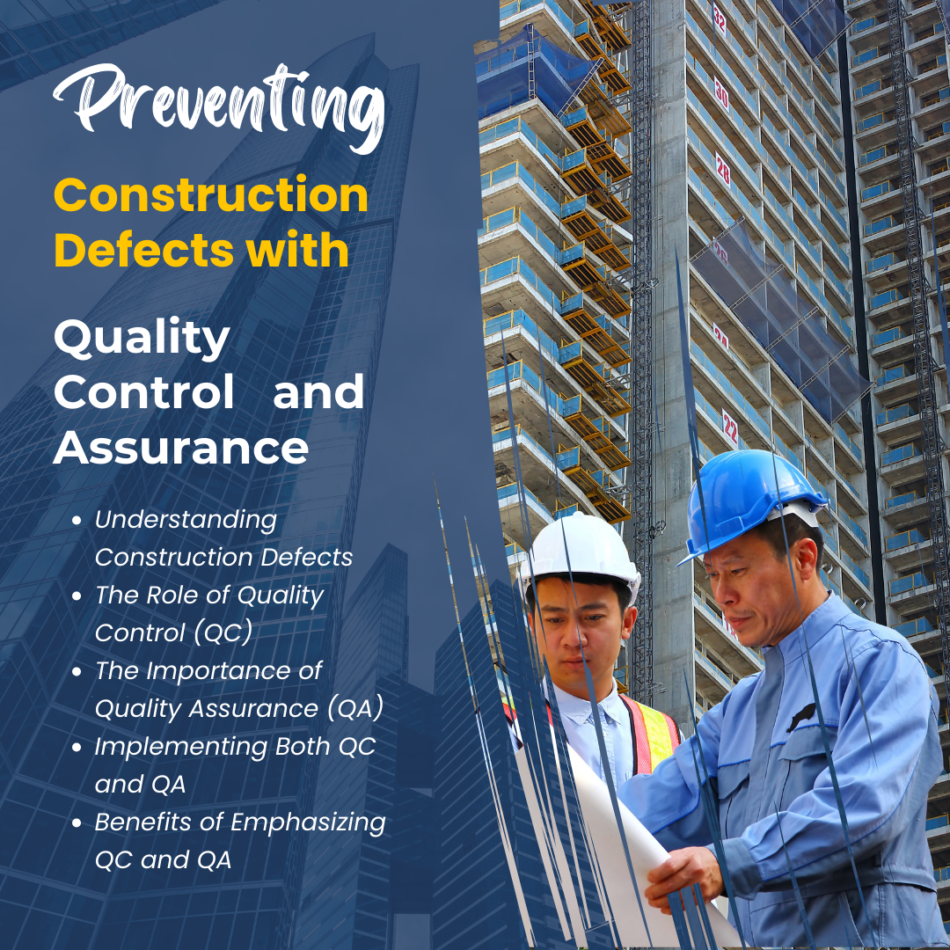Construction is a complex, multi-faceted process. The last thing any contractor or owner wants to face is the discovery of defects after a project’s completion. Defects not only can compromise the structural integrity and safety of a building but also lead to costly repairs and potential legal liabilities. Thankfully, with robust quality control and assurance processes in place, many construction defects can be prevented. Here’s how.
1. Understanding Construction Defects
Construction defects can range from minor issues, like a poorly fitted window, to significant problems like a faulty foundation. They can be the result of poor materials, improper installation, design flaws, or miscommunication.
2. The Role of Quality Control (QC)
Quality Control is all about inspection and detection. It’s the process by which construction professionals evaluate and ensure the quality of materials and workmanship. The key components of QC in construction include:
- Material Inspection: Ensuring that all materials used meet the standards and specifications for the project.
- Workmanship Monitoring: Supervising workers to make sure the installation processes are up to par.
- Testing: This might include soil tests, concrete strength tests, and other diagnostic procedures to ascertain the quality of work.
- Documentation: Keeping detailed records of inspections, tests, and any identified issues.
3. The Importance of Quality Assurance (QA)
While QC is reactive, Quality Assurance is proactive. QA is a systematic process that ensures the quality of the construction process from the beginning. It involves setting standards, training, and guidelines for every phase of the project. The main features of QA include:
- Process Standardization: Implementing standard processes across the board to ensure uniformity and consistency.
- Training: Ensuring that all workers, from laborers to project managers, understand and adhere to these processes.
- Continuous Improvement: Regularly reviewing and revising procedures to optimize quality.
4. Implementing Both QC and QA
Having both QC and QA processes in place is essential. While QA sets the standard and processes, QC ensures that they are followed and identifies any deviations. By integrating these processes:
- Defects can be identified early, often before they become bigger problems.
- There’s a continuous loop of feedback, allowing for ongoing improvement.
- Stakeholders can have increased confidence in the final product’s quality.
5. Benefits of Emphasizing QC and QA
By prioritizing quality control and assurance:
- Reduced Costs: Spotting and rectifying issues early on means avoiding expensive repairs down the line.
- Enhanced Reputation: Delivering a defect-free project boosts a contractor’s reputation in the industry.
- Improved Safety: A project built to the highest quality standards is less likely to have safety issues.
- Fewer Legal Issues: Minimized defects mean reduced chances of facing lawsuits due to construction flaws.
Conclusion
In the construction industry, where the stakes are high and margins can be thin, preventing defects isn’t just about ensuring a successful project—it’s about safeguarding a company’s reputation, financial health, and the safety of end-users. With diligent quality control and assurance processes in place, the construction industry can move closer to a world where defects are the exception, not the norm.








